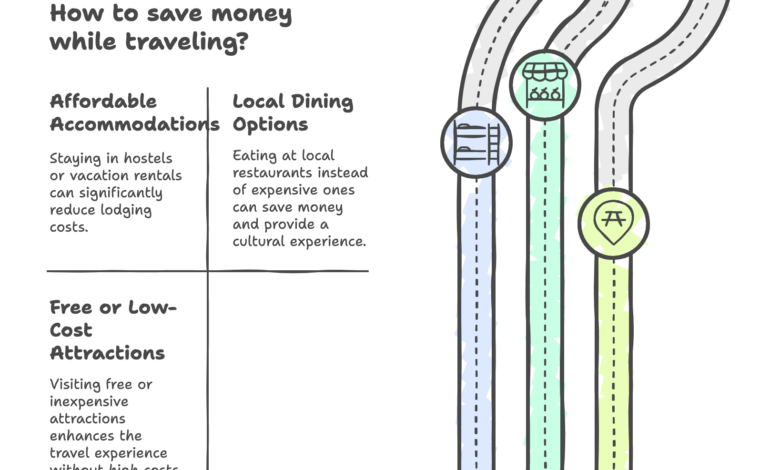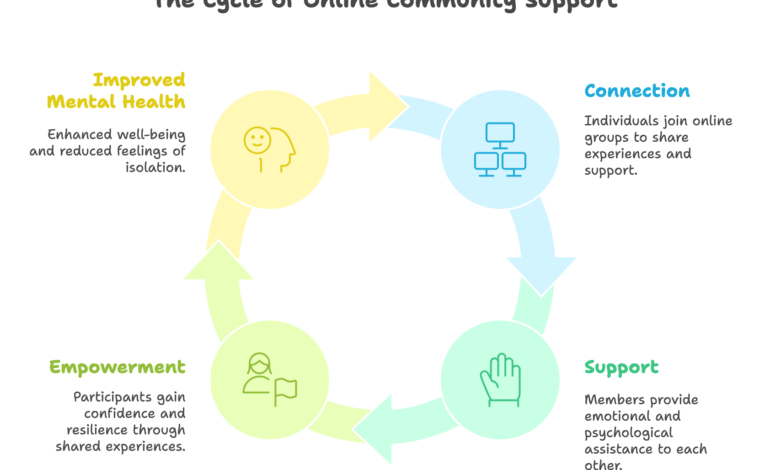How to Travel the World Without Breaking the Bank

Traveling the world is an adventure that many dream about, but the cost often stands in the way. From expensive flights and pricey accommodations to eating out and sightseeing, the expenses can quickly add up, making it seem impossible for the average traveler to afford a global adventure. However, the good news is that budget travel is entirely possible, and you don’t need to spend a fortune to experience some of the world’s most beautiful, exciting, and enriching destinations. In this guide, we’ll show you how to travel the world without breaking the bank, offering practical tips and insights to help you make your dream trip a reality..
With a little creativity, planning, and flexibility, you can travel on a budget without sacrificing quality or experience. In this comprehensive guide, we will explore a variety of tips and tricks that will help you save money while traveling, from choosing affordable destinations to finding budget accommodations, using public transportation, and enjoying local experiences. If you’re ready to explore the world without breaking the bank, keep reading for practical advice that can turn your travel dreams into reality.
1. Start with Choosing Budget-Friendly Destinations
When it comes to traveling on a budget, one of the best ways to save money is by selecting a destination that is known for being affordable. Some places are naturally cheaper to visit, thanks to the cost of living, local currency values, and the availability of budget-friendly services. Here are a few tips for selecting the perfect travel destination that fits your budget:
Look for Low-Cost Countries
Certain countries offer exceptional travel experiences at a fraction of the cost. Southeast Asia, Central America, and Eastern Europe are renowned for their affordability. Countries such as Thailand, Vietnam, Indonesia, Mexico, and Portugal offer great value for money, with beautiful landscapes, rich culture, and delicious food that won’t break the bank. Countries in South Asia and Central America, such as India, Nepal, and Guatemala, are also excellent choices for budget-conscious travelers.
You can learn more about budget-friendly destinations in our article on top budget travel spots to help you plan an affordable adventure.
Avoid Expensive Tourist Hotspots
Some places, like Paris, London, or Tokyo, are known for being more expensive due to their popularity and high demand from tourists. While these destinations are beautiful, they may not be the best choices if you’re traveling on a tight budget. Instead, consider visiting lesser-known places in the same region that offer similar experiences but at a much lower cost. For example, consider visiting Lisbon in Portugal instead of more expensive destinations like Barcelona or Paris. These hidden gems often offer the same charm and attractions, but with far fewer crowds and much more affordable prices.
If you interested in discovering more affordable alternatives to expensive destinations, check out our detailed guide on hidden gems for budget travelers.
Travel to Emerging Destinations
Another strategy for budget-friendly travel is to choose destinations that are growing in popularity but haven’t yet reached their peak in terms of tourist numbers. Places like Georgia, Albania, and parts of Mexico or Colombia are becoming more recognized by travelers, offering an authentic experience without the inflated prices of well-established tourist spots.
Travel to Countries with Favorable Exchange Rates
If you’re traveling internationally, the exchange rate can have a significant impact on your overall expenses. Some currencies are much weaker than others, meaning your money will stretch further. For example, countries like Mexico, Turkey, and Argentina offer favorable exchange rates for travelers coming from countries with stronger currencies, making it possible to live like a king on a budget.
2. Be Flexible with Your Travel Dates
Flexibility is key when it comes to saving money on travel. The price of flights, accommodations, and even activities can vary greatly depending on the time of year. Here’s how being flexible with your travel dates can help you save:
Avoid Peak Travel Seasons
Traveling during peak seasons, such as the summer months or major holidays, means higher prices for flights, accommodations, and attractions. Try to plan your trip during the shoulder season or off-season. For instance, traveling to Europe in the spring or fall is often cheaper and less crowded than in the summer. Many destinations also offer discounts during the off-peak months, so you can enjoy the same experiences at a much lower cost.
Book Flights in Advance
One of the easiest ways to save money on flights is to book well in advance. Airlines often offer lower prices months before the departure date. If you know your travel dates, try to book your flight around 6-8 weeks before you plan to leave. While last-minute deals can sometimes be found, booking early tends to provide the best discounts.
Use Flexible Search Tools for Flights
Many flight search engines, such as Skyscanner or Google Flights, allow you to search for flights based on flexible dates. You can compare the prices for flights on different days, allowing you to pick the most affordable days to travel. If your dates are flexible, this can help you save a significant amount of money.
3. Find Affordable Accommodation
Accommodation can be one of the most significant expenses while traveling, but it doesn’t have to be. By considering alternatives to traditional hotels, you can save a lot of money. Here are some great options for budget accommodations:
Hostels
Hostels are a classic budget-friendly option for travelers, offering cheap beds in shared dormitories. They are a great way to meet other travelers and make new friends. Many hostels also offer private rooms at a slightly higher price. Hostels are especially popular in Europe, Southeast Asia, and Central America, where they are known for being clean, safe, and affordable.
Airbnb and Vacation Rentals
Airbnb and other vacation rental platforms, such as Booking.com or Vrbo, can offer great alternatives to hotels. Renting an apartment or room through Airbnb allows you to save on meals by cooking your own food and gives you more space and flexibility than a hotel room. You can often find budget-friendly listings in both major cities and more remote destinations.
Guesthouses and Budget Hotels
Guesthouses and small, locally-owned hotels often offer more affordable rates than large chain hotels. These accommodations are usually family-run and provide a more authentic experience of the local culture. They can also be a great way to support the local economy while saving money. Look for budget hotels or guesthouses that offer basic amenities without the extra frills of high-end hotels.
Couchsurfing
For the more adventurous traveler, Couchsurfing offers the opportunity to stay with locals for free. While it may not be for everyone, Couchsurfing can be a fantastic way to save money and connect with locals in a meaningful way. Many hosts also provide tips and recommendations for exploring their city, giving you insider knowledge that can enhance your experience.
Camping
Camping is another affordable accommodation option, particularly in areas with stunning natural beauty. National parks, beaches, and forests often have campsites where you can pitch a tent for a small fee, or sometimes for free. Camping is ideal for nature lovers and adventurous travelers who don’t mind roughing it a bit.
4. Save Money on Transportation
Transportation can be one of the biggest expenses on a trip, but there are many ways to save on getting around:
Public Transportation
Public transportation is a reliable, affordable, and eco-friendly way to get around while traveling. Most major cities have metro systems, buses, or trams that are easy to use and budget-friendly. Many cities also offer day passes for unlimited travel, which can save you money if you plan on exploring a lot. Make sure to research the public transport system before your trip to understand how it works.
Walk or Bike
Walking or biking is not only the cheapest way to get around but also the best way to see a new city. You’ll get to experience the destination from a local’s perspective and discover hidden gems that you might miss on a bus or taxi. Many cities have bike-sharing programs, making it easy to rent a bike for a few hours or a day at an affordable price.
Budget Airlines
If you’re traveling long distances, budget airlines can be an excellent way to save money. Airlines like Ryanair, EasyJet, and AirAsia offer incredibly low prices on domestic and international flights. While these flights may come with limited amenities, the low ticket prices can make them a great option for budget travelers.
Ride-Sharing Apps
In some cities, ride-sharing apps like Uber or Lyft can be cheaper than taxis, especially if you’re traveling with a group. You can split the cost of the ride, making it more affordable. However, always compare the price with other modes of transport to make sure you’re getting the best deal.
Trains and Buses
For shorter distances or when flying isn’t an option, trains and buses are often more affordable and comfortable than flights. In Europe, Japan, and many parts of Asia, trains offer fast and scenic routes between major cities. Buses are usually slower but often significantly cheaper, especially for budget-conscious travelers.
5. Save on Food and Dining
Food can be a major expense while traveling, but it doesn’t have to be. Here are some tips for saving money on food during your trip:
Street Food
Street food is often not only affordable but also one of the best ways to experience a destination’s cuisine. Whether it’s tacos in Mexico, pho in Vietnam, or satay in Thailand, street food offers delicious local dishes at a fraction of the cost of restaurant meals. Look for popular street food vendors with high customer turnover to ensure the food is fresh and safe.
Cook Your Own Meals
If you have access to a kitchen in your accommodation, consider cooking some of your meals. Buying ingredients from local markets or grocery stores and preparing your own meals can save you a significant amount of money. Cooking also allows you to experiment with local ingredients and try making traditional dishes on your own.
Eat Where Locals Eat
Touristy restaurants near major attractions tend to be overpriced. Instead, ask locals where they like to eat. Small, family-run restaurants or eateries off the beaten path often serve better food at much lower prices. Locals know where to find the best and cheapest meals, so don’t be afraid to ask.
Avoid Hotel Buffets
Hotel buffets can be convenient, but they are often overpriced. Instead, venture out into the local neighborhood and try a café or street food stall. You’ll get to experience authentic local flavors while keeping your budget in check.
6. Free Activities and Sightseeing
Not every experience while traveling needs to come with a price tag. Many of the best experiences in a new destination are free. Here are some ideas for free activities:
Explore Nature
Nature is free, and many destinations around the world offer stunning natural beauty that you can explore for little or no cost. Whether it’s hiking through a national park, relaxing on a beach, or wandering through a forest, nature offers plenty of opportunities for free adventures.
Free Walking Tours
Many cities offer free walking tours, where you can join a local guide to explore the highlights of the area. While these tours are technically free, it’s customary to tip the guide based on how much you enjoyed the experience.
Visit Museums and Art Galleries on Free Days
Many museums and galleries around the world offer free entry on certain days or during specific hours. Take advantage of these opportunities to explore cultural attractions without spending a dime.
Attend Festivals or Events
Local festivals, parades, and events can provide a rich cultural experience without any cost. Many towns and cities host free concerts, art shows, and cultural celebrations that are open to the public.
7. Pack Smart and Save on Luggage Fees
Packing smartly can save you money, especially when it comes to avoiding luggage fees on flights. Here are some tips for packing efficiently:
Travel Light
By packing only what you need, you can avoid extra baggage fees on flights. Stick to the essentials and pack versatile clothing that can be mixed and matched. Many budget airlines charge extra for checked bags, so aim to pack everything into a carry-on if possible.
Use a Travel Backpack
A backpack is often more flexible than a suitcase, especially when it comes to navigating public transport or exploring on foot. Backpacks also make it easier to avoid checked luggage fees, as many airlines allow small backpacks as carry-ons for free.
Pack Snacks
Airport food and snacks can be expensive. Pack your own snacks for the journey, such as granola bars, nuts, or dried fruit. This way, you’ll save money on overpriced airport meals and have something to munch on during long flights or bus rides.
Conclusion: Traveling the World on a Budget
Traveling on a budget is not only possible, but it can also be incredibly rewarding. With a little planning, flexibility, and creativity, you can explore new destinations without spending a fortune. From choosing budget-friendly destinations and finding affordable accommodation to using public transportation and eating like a local, there are countless ways to save money while still having an amazing travel experience.
Remember, travel is about the experiences you have, the people you meet, and the memories you make—not how much money you spend. With these budget travel tips in mind, you’ll be able to enjoy your next adventure without worrying about your finances. So start planning, pack your bags, and get ready to explore the world—on your budget.







